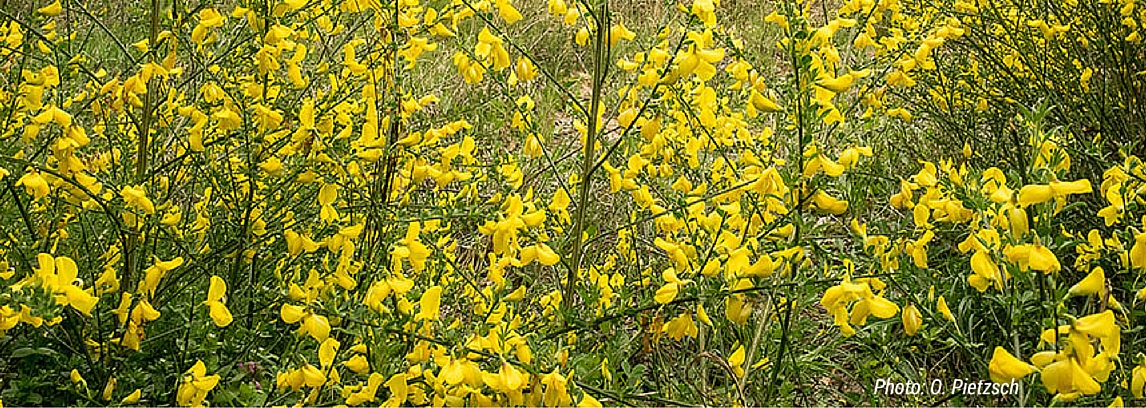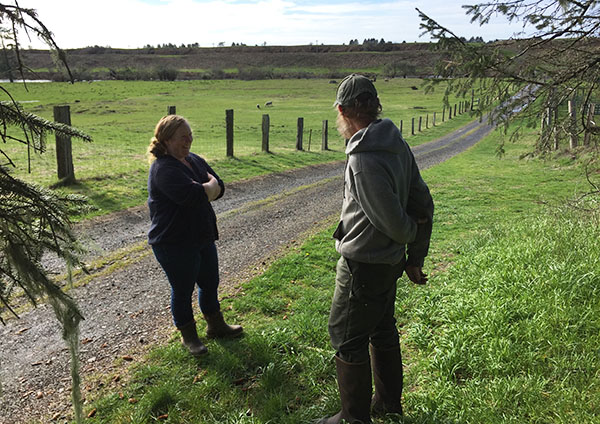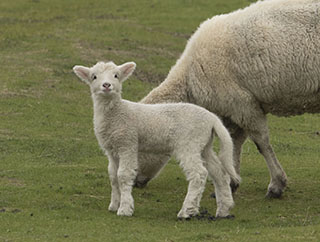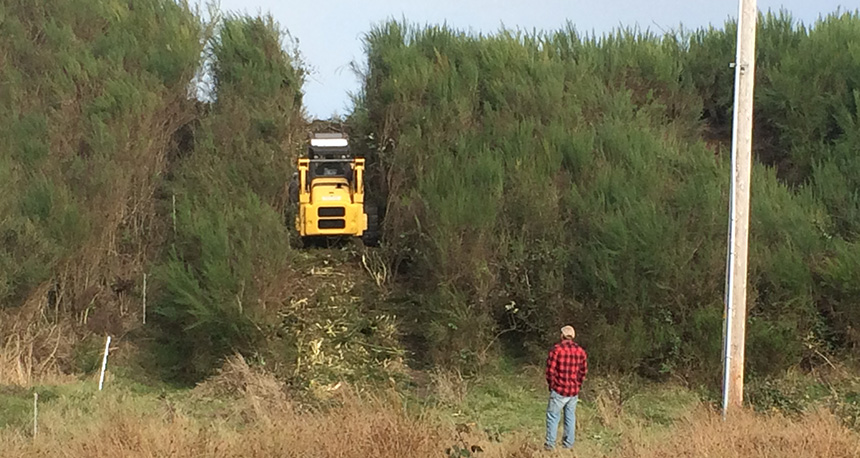Why are sheep grazing at Reed Ranch Habitat Reserve, North Coast Land Conservancy’s largest preserve in the coastal prairie?
Better you should ask, where did all that invasive Scotch broom go?
The short answer to both questions: Sometimes it takes unexpected partners—in this case, a fourth-generation Clatsop Plains rancher and tools ranging from heavy equipment to nibbling sheep—for NCLC to achieve its habitat restoration goals.

For several years North Coast Land Conservancy has been acquiring tracts of land in the Clatsop Plains, conserving remnants of intact prairie and removing livestock from lands converted to pasture, to allow the land to recover and native plants to return. When NCLC purchased 117-acre Reed Ranch in 2008, years of neglect had resulted in widespread infestation by Scotch broom.

Broom crowds out native plants. It fixes nitrogen, which creates a richer soil than prairie plants can tolerate, and invites even more weeds to take hold. NCLC managed to eradicate the mature Scotch broom from most of Reed Ranch, and we keep it at bay with annual mowing (the seeds can remain viable in the soil for up to 30 years).
But not quite all the broom at Reed Ranch was eradicated. Stewardship Director Melissa Reich has long been vexed by the “old growth” Scotch broom covering the two easternmost dune ridges at Reed Ranch—one of the worst infestations in all of Clatsop County, she said. Those dunes are too steep to mow. In places they’re almost too steep to walk.
“Our commitment to the land is to make sure that it maintains ecological function and a high level of habitat,” she says. But hand-cutting 15 acres of Scotch broom 14 feet tall was unthinkable, and the steepness of the slopes ruled out mowing or even weed-whacking, she said. “It was hard to have this property that was such a seed source (for broom) and such a degraded habitat. I figured it was an area we couldn’t do anything about.”
Then last fall, using funding from the federal Natural Resources Conservation Service intended for brush management and habitat enhancement for butterflies and other pollinators, Melissa hired Bigby’s Tree Service of Astoria to take a shot at the hillsides. It was Bigby’s that recommended bringing in a forestry mulcher, also known as a masticator or brush cutter: a large tractor that uses a rotary drum with steel chipper teeth designed to shred vegetation. In early November, the forestry mulcher went to work on the remaining Reed Ranch Scotch broom.
Where every other approach had failed, the forestry mulcher succeeded. It chewed up the broom and blackberries and steered clear of the Nootka rose, willows and other native plants on the property. In the process it revealed an old apple tree that had been completely obscured by broom.
But the specter of re-growth remained: annual mowing to cut down the inevitable broom seedlings was not going to work on the steep slopes. So Melissa decided to collaborate with NCLC’s neighbor, Bill Reed, whose family has been farming and ranching in the Clatsop Plains for more than a century.

Melissa, with Bill Reed at his ranch across West Lake from Reed Ranch Habitat Reserve
He’s a close observer of the natural world, and he knows livestock. “I’ve been here my whole life watching, and the stories my grandparents and great-grandparents told me can give you a pretty good idea of what’s going on,” Bill says. What he knows: cows don’t eat brush—such as Scotch broom seedlings—but sheep do. Cows are handy to have around, however, “to help keep the coyotes from bothering the sheep.”
 In late February, Reed began moving sheep onto NCLC’s Reed Ranch. Some of the ewes are trailed by newborn lambs.
In late February, Reed began moving sheep onto NCLC’s Reed Ranch. Some of the ewes are trailed by newborn lambs.
This spring Melissa plans to seed the hillside with grass and wildflower species native to these dunes, selected in consultation with botanist and ecologist Kathleen Sayce, including red fescue, Alaska brome, spiked bentgrass, western buttercup, heal-all, and yarrow. Experienced local farmers suggest that the grazing sheep won’t significantly impact the emerging grasses and forbs.
“We’re kind of putting our all into this and hoping for the best,” Melissa says. “Whatever happens will be better than it was.”

Elk graze in sight of Bill Reed’s sheep pasture.


Comments